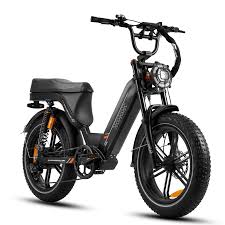Introduction
Electric bikes, commonly referred to as e-bikes, have surged in popularity over the past decade. Combining the best aspects of traditional cycling with modern technology, e-bikes offer a convenient, eco-friendly, and efficient mode of transportation. This article explores the features, benefits, and growing influence of electric bikes on urban mobility.
The Basics of Electric Bikes
What is an Electric Bike?
An electric bike is a bicycle equipped with an integrated electric motor that can be used for propulsion. There are various types of e-bikes available, ranging from those that offer a small assist to the rider’s pedaling to those that provide a more powerful boost, allowing for higher speeds and easier climbs.
Key Components
Electric bikes typically consist of a few key components:
- Motor: The heart of the e-bike, providing power to assist with pedaling.
- Battery: Usually lithium-ion, the battery powers the motor and can be recharged using a standard electrical outlet.
- Controller: The brain of the e-bike, managing power delivery from the battery to the motor based on the rider’s input.
- Display: Shows critical information such as speed, battery level, and assistance mode.
Benefits of Electric Bikes
Eco-Friendly Transportation
One of the most significant advantages of e-bikes is their environmental impact. Unlike cars and motorcycles, e-bikes produce zero emissions, helping to reduce air pollution and reliance on fossil fuels. This makes them an ideal option for environmentally conscious commuters.
Health and Fitness
While some might think that the motor assistance in e-bikes diminishes their health benefits, studies have shown the opposite. E-bikes encourage more people to cycle, including those who might find traditional biking too strenuous. Riders still engage in physical activity, benefiting from cardiovascular exercise and muscle strengthening, albeit with less strain.
Cost-Effective
Owning and maintaining an electric bike is considerably cheaper than a car or motorcycle. E-bikes have lower upfront costs, and their maintenance expenses are minimal. Additionally, they do not require fuel, making them an economical choice for daily commuting.
Convenience and Accessibility
E-bikes are incredibly user-friendly and accessible to a wide range of people. They make commuting easier by allowing riders to travel further distances without getting excessively tired. This is particularly beneficial for older adults or individuals with physical limitations who might find traditional biking challenging.
The Growing Popularity of Electric Bikes
Urban Commuting
Cities around the world are witnessing a rise in e-bike usage as a practical solution to urban commuting challenges. Traffic congestion and limited parking spaces make e-bikes an attractive alternative. Many urban centers are investing in cycling infrastructure, such as dedicated bike lanes and bike-sharing programs, to support this growing trend.
Recreational Use
Beyond commuting, electric bikes are gaining popularity for recreational purposes. They allow riders to explore longer and more challenging routes without the physical strain associated with traditional biking. E-bikes are becoming a common sight on trails, in parks, and even on mountain paths, expanding the horizons for outdoor enthusiasts.
Technological Advancements
The rapid advancements in technology have significantly improved the performance and appeal of e-bikes. Modern electric bikes are lighter, have longer battery life, and come with various smart features such as GPS tracking, app integration, and advanced safety mechanisms. These innovations continue to drive interest and adoption among consumers.
Challenges and Considerations
Regulatory Issues
As e-bikes become more prevalent, regulatory bodies are grappling with how to classify and manage them. Different countries and regions have varying laws regarding e-bike speed limits, where they can be ridden, and whether they require registration or insurance. Harmonizing these regulations remains a challenge.
Battery Concerns
While lithium-ion batteries have revolutionized e-bike technology, they also pose some challenges. Battery disposal and recycling need to be managed properly to avoid environmental harm. Additionally, battery life and charging infrastructure are areas that require ongoing improvement.
Conclusion
Electric bikes are transforming the way people think about transportation. Offering a blend of convenience, environmental benefits, and health advantages, e-bikes are poised to play a significant role in the future of urban mobility. As technology continues to evolve and infrastructure adapts, the popularity of electric bikes is expected to soar, paving the way for greener and more efficient cities.

